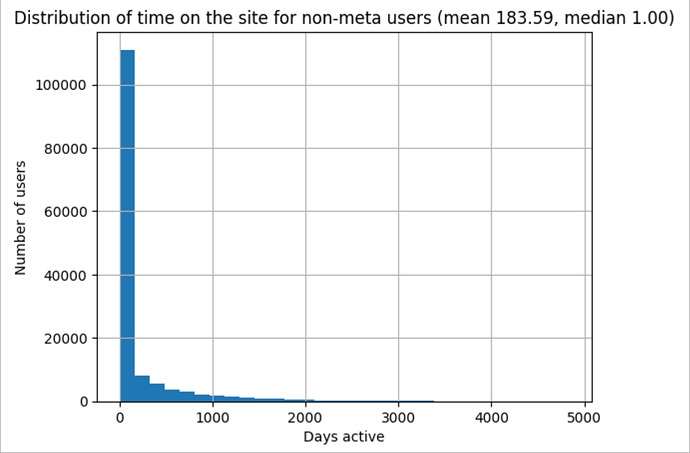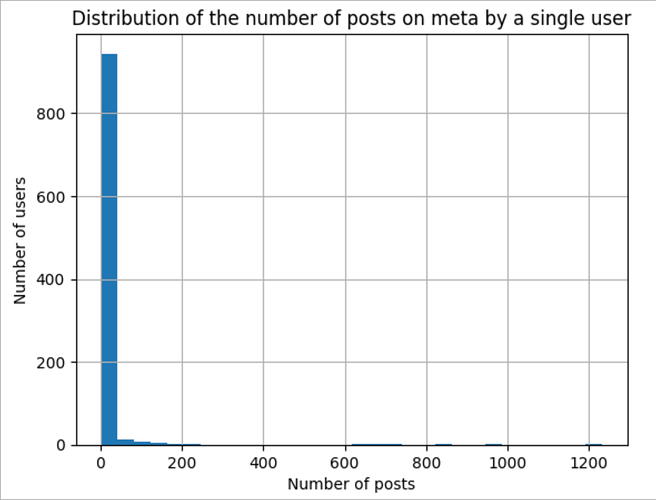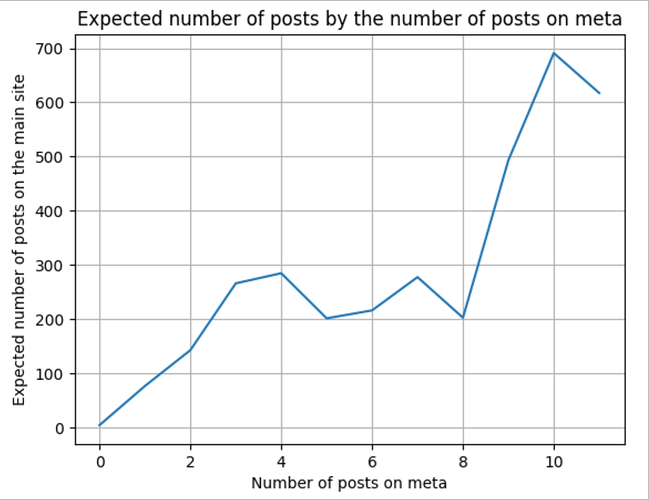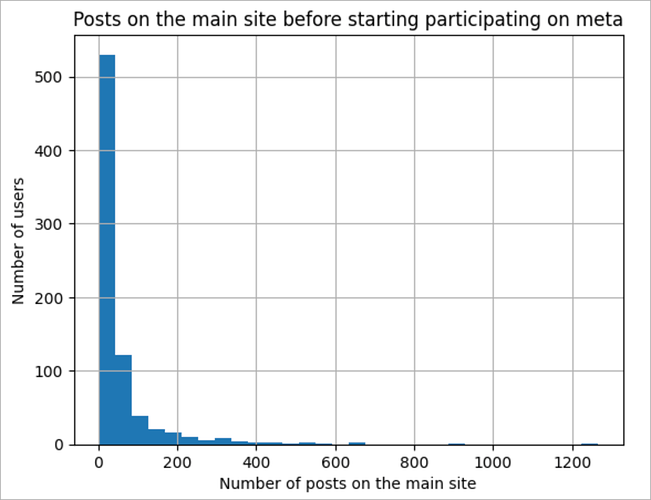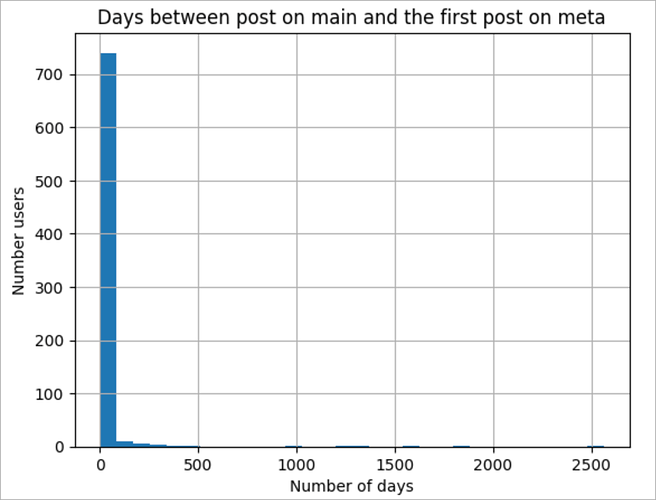The tree places
Sociologists distinguish three distinct social environments where people operate. The first place is home, where we spend most of our free time. The second place is the workplace, the place where we go to do something. The third place is the place of socialization. In the context of online communities, the first place is the main site, the second place is a site for meta discussions, the third place is a site for off-topic conversations.
When I was working on international Stack Overflow communities, I clearly saw that without the second and third places, the growth of the first place is limited. Here is the thing:
If at some point you do not provide opportunities for users to socialize based on some interests that go beyond the topic of the community, then either the users will be unhappy with the community or there will be off-topic conversations on the main site.
Let’s see how things look in data based on international Stack Overflow communities.
Percent of meta users and the amount of content they create
What is your guess about the percent of users participating on meta? Here is the data for the four international Stack Overflow communities.
- Stack Overflow in Russian: 0.55% (yes, you are reading it correctly just half of one percent).
- Stack Overflow in Spanish: 0.68%
- Stack Overflow in Japanese: 1.43%
- Stack Overflow in Portuguese: 1.23%
Now, guess about the percent of posts this tiny minority of users creates on the main site.
- Stack Overflow in Russian: 15.74%
- Stack Overflow in Spanish: 23.50%
- Stack Overflow in Japanese: 35.31%
- Stack Overflow in Portuguese: 31.94%
I think we can stop right here because I do not know a person who would like to cut off 20 to 30 percent of their content or do not want to know and have a channel to work with the community rockstars! And this is exactly what will happen if you do not have meta. (Actually, I believe that if your community does not have meta it will not even attract those “top producers”.)
Let’s dig a bit dipper.
Lifespan on the main site
We can take a look at how many days separate the first and the last post of a user for both groups, those who participate on meta and those who do not, in other words, for how long people stay active in the community. Here is data for Stack Overflow in Russian.
The same data for meta users.
Participation patterns on meta
It seems, in general, the patterns of participation on meta are not far from what we usually see on a main site. Meta consists of a lot of users who participate very little and a little of users who participate a lot.
Approximately half of the users post on meta only once.
Number of posts on meta and activity on the main site are related
Here is another interesting chart on the level of activity for meta and non-meta users.
The chart says that we should expect around 5 posts from an average non–meta user. As soon as a person starts participating on meta our expectation on the number of posts by an average user jumps up to 78 posts! If a person progresses to 10 posts on meta, we should expect more than 600 posts on the main site from them.
Probably, you would “Yeah, when a person asks their 10th meta post probably they are already the core user”. Let’s see!
People start participating on meta right away!
I somehow always thought that people start participating on the main site and when they feel that the community is something they want to be part of (ie after some considerable participation) they start posting on meta. Let’s see what data says.
As you can see, my gut feeling was a bit incorrect. Even though there are some users who start participating on meta after some time, most of the users go to meta right after they become an active user in the community.
Yes, the chart above says that people usually post on meta right after doing a thing on the main site.
A bit of philosophy
I came to this research while working on new parameters for the community planner. Basically, my task was to estimate how many resources one should invest in order to build a community. One of the primary investments in a community is hiring a community manager. So the task was to quantify what a community manager does, like contests or discussions on meta and then model it. When I was thinking about the process behind (and how to model it) I came to the following question:
How does having meta affect the user base? Does meta enable users to be more active or highly active users just never stay in the community that does not have meta?
What do you think?
